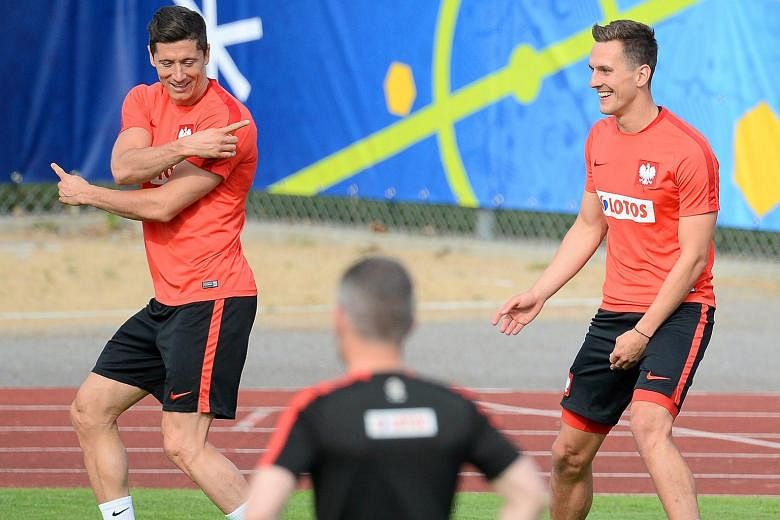The striker was an endangered species.
Spain won Euro 2012 after beginning the final with six midfielders, one deployed as a false nine, and no out-and-out forward. Germany won the 2014 World Cup with a 23-man squad that included a solitary striker in Miroslav Klose.
Tactical trends counted against the specialist predator. The passer seemed to be in the ascendancy.
Such was Pep Guardiola's influence that teams appeared destined to feature 10 midfielders and a ball-playing goalkeeper.
Perhaps they still might but, like much else, tactics are often cyclical. Two-striker systems, which had fallen out of fashion, seem to be coming back into favour at Euro 2016.
There are various reasons why: perhaps defenders, accustomed to having only one striker to mark, struggle to deal with pairs; some managers are adopting a more direct style of play; some are simply selecting their 11 best players, who happen to include two centre-forwards.
And the reality is that tactics in international football, where the talent gulf between team-mates can be considerable, are often dictated by the outstanding individuals.
Slovakia favour 4-2-3-1, the vogue formation of the last few years, because they have a high-class No. 10 in Marek Hamsik. Wales build a side around two attacking midfielders, Gareth Bale and Aaron Ramsey. They prefer 3-4-2-1.
When the pivotal figure is a forward, the dynamic changes. Sweden play 4-4-2, so one hard-working striker, probably Marcus Berg, can occupy defenders to free up space for the catalytic Zlatan Ibrahimovic. Poland paired Robert Lewandowski with Arkadiusz Milik with such effect that they were the highest-scoring pair in qualifying.
The high-pressing, up-tempo Poles are part of a broader theme, the revival of the more physical, less technical football espoused by Diego Simeone, Jurgen Klopp and Mauricio Pochettino.
It does not automatically entail fielding two strikers but Atletico Madrid reached the Champions League final and Leicester won the Premier League this season playing 4-4-2, which had seemed the dinosaur of systems.
Not any more, even if comparatively few teams will play a conventional 4-4-2. But it never went out of favour in Scandinavia, with its strong British influence, and both Iceland and Sweden will use it.
Portugal, however, have broken with tradition by playing 4-4-2. The reason is counter-intuitive. They have long lacked quality strikers. Now Fernando Santos has disposed with them altogether, using wingers Nani and Cristiano Ronaldo as roaming, roving forwards in freer roles. Again, key players' strengths are the determining factor.
England have made a different journey to a similar destination. Just when they were finally weaned off two-striker systems, Harry Kane, Jamie Vardy and Marcus Rashford emerged as their options on the flanks became less attractive. The pragmatic move is to play a midfield diamond and two forwards.
Others' plans changed for different reasons. Northern Ireland played 4-3-3 in qualifying but when left-back Chris Brunt was injured and without a suitable replacement, manager Michael O'Neill switched to a 3-5-2 formation.
Like the midfield diamond, it is a tactic that allows a side two centre-forwards without being outnumbered in the centre of the pitch.
It is why Italy could deploy it, just as Antonio Conte often did as Juventus manager. The next Chelsea coach is tactically flexible, however, like his predecessor Cesare Prandelli. He took Italy to the Euro 2012 final with two forwards, Mario Balotelli and Antonio Cassano, usually operating ahead of a midfield diamond.
Italy overachieved then. They are still less fancied now. And while they may be exceptions, along with Portugal and Croatia, who have experimented with several formations, most of the sides who field two strikers may have a minority of possession.
The tournament is likely to be won by one who has the ball for the most part. The four favourites are France, Spain, Germany and Belgium. None are likely to use two up top.
Germany and Spain could even end up with a false nine leading the line. For them, 2016 may look like 2014 and 2012.


